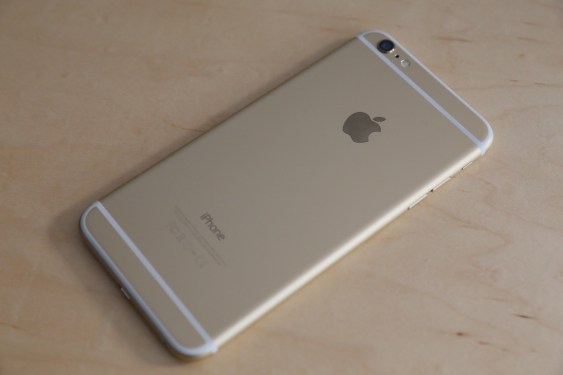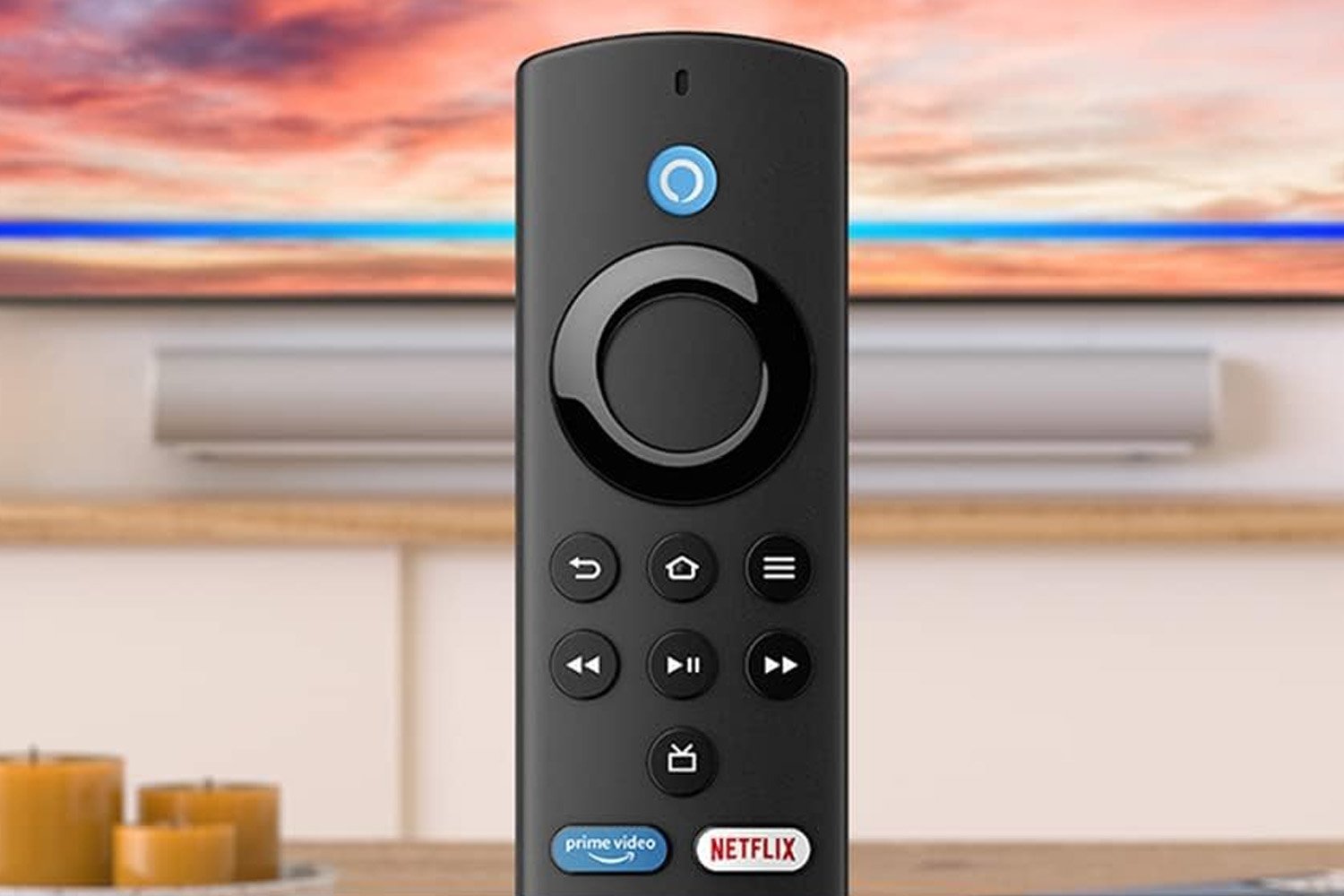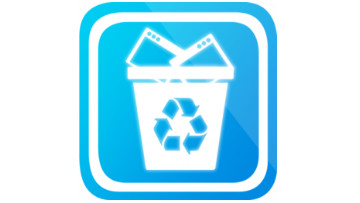Apple has spoken up amid a wave of discussions about bending on the iPhone 6 and iPhone 6 Plus. The company characterized the issue as extremely rare, noting that only nine customers had reported complaints out of the tens of millions of devices sold to date. In its explanation, Apple contrasted everyday usage with the highly artificial, forceful demonstrations seen in some online videos that appear designed to force the devices to bend. The company underscored that, under normal conditions, the bending problem is uncommon, aiming to reassure consumers that the vast majority of users are not affected.
Apple also pointed to enhancements in its newer iPhones meant to reduce risk of bending. The devices incorporate steel and titanium inserts at stress-prone locations to reinforce structural integrity, paired with what Apple describes as the strongest glass in the industry intended to resist breakage and deformation. In addition to these materials, Apple highlighted extensive testing conducted throughout the design and development process. The company asserted that the iPhone 6 and 6 Plus underwent rigorous testing to evaluate their performance under bending, sitting, torsion, and other forms of mechanical stress, including scenarios extending over prolonged periods. These claims align with standard industry practice, where durability tests are integral to product development and launch readiness.
Apple’s response also touched on the broader dynamics of how hardware launches are perceived in the technology press and online communities. It suggested that the volume and tone of coverage around the bend issue may reflect a tendency to amplify new hardware concerns when a new design is introduced, especially during the early moments after a product ships. The company has faced similar scrutiny in the past when metal-cased devices first emerged, though it suggested that the current wave of attention was particularly intense. Apple’s position emphasizes that while isolated instances may occur, they do not reflect typical user experiences, and that the overall reliability of the iPhone 6 family remains solid as judged by the company’s internal testing and real-world usage.
This response sits within a broader context of how consumer electronics are designed, tested, and evaluated by the public, industry observers, and media personalities. The juxtaposition of official statements with user-generated demonstrations—some showing devices bending under significant pressure—has created a narrative in which the perceived severity of the issue is driven as much by discourse as by actual hardware failures. The emphasis on a small number of complaints relative to total sales appears designed to reassure potential buyers and to place the reported bending incidents within a larger framework of durable design and validation. The company’s narrative underscores the distinction between dramatic, controlled demonstrations and normal daily use, suggesting that the latter should be the pertinent measure for most consumers.
This sequence of events also raises questions about how product durability is tested and communicated to a broad audience. The availability of demonstration videos showing extreme bending invites comparisons with earlier debates about device robustness, including debates that have dogged metal-bodied devices since their inception. The Apple statement implies that the industry-standard tests for wear and deformation—while not always visible to consumers—are comprehensive and designed to simulate long-term use well beyond ordinary daily routines. In this way, the company frames the bend controversy as part of a larger conversation about how hardware durability is assessed, presented, and interpreted in a fast-paced tech environment.
Section 1: Apple’s Response and Reported Incidents Across the iPhone 6 Line
The immediate takeaway from Apple’s remarks is that bending is not a widespread defect. The assertion that only nine customers have reported bending issues, out of well over 10 million devices sold, is presented as a stark contrast to the volume of public concern and online discussion that followed the initial reports. By using a numeric framing, Apple attempts to translate anecdotal experiences into a quantifiable measure of rarity, inviting readers to view the issue through the lens of probability and mass production. This framing is reinforced by the company’s emphasis on normal-use scenarios and by distinguishing these from artificial tests that may skew perceptions of how devices behave under stress.
In explaining the protective measures incorporated into iPhone 6 and 6 Plus, Apple identified two core design strategies. First, the use of steel and titanium inserts is described as a means to reinforce high-stress locations within the chassis. This approach seeks to distribute and mitigate concentrations of force that might otherwise lead to localized bending or other deformations. Second, Apple references the glass used in the devices as “the strongest glass in the industry,” positioned to resist cracking and, by extension, to maintain structural integrity under a range of pressures. Taken together, the materials strategy emphasizes both structural reinforcement and surface durability, aiming to minimize conditions that could precipitate visible bending or warping.
Beyond materials, Apple highlighted its testing regimen as a cornerstone of the device’s resilience. The iPhone 6 family underwent extensive trials designed to evaluate performance under bending, sitting, torsion, and other mechanical stressors. These assessments purportedly covered prolonged exposure to stress, which is relevant for understanding long-term durability. The claim that such tests are standard in the industry helps position Apple’s approach as aligned with established best practices in smartphone engineering. The company’s assertion that the tests were thorough and representative serves to reassure consumers who rely on long-term reliability as a key factor in their purchasing decisions.
The narrative around these findings also engages with how information in the tech press travels and how communities interpret it. The notion of an “echo chamber” suggests that enthusiasm for the novelty of a new device can amplify concerns beyond their empirical severity. Apple’s framing of this phenomenon reflects a broader conversation about how early-stage coverage can distort risk perceptions, especially when dramatic visuals and provocative headlines accompany new technology. The company implies that the visible intensity of online debate does not necessarily reflect the real-world experience of the vast majority of users.
In tracing the arc of this controversy, it’s useful to compare the current situation with past episodes in which metal or other advanced materials were introduced into consumer devices. Apple notes that the bending issue has surfaced before in the context of devices with metal enclosures, but it argues that the amplification around the current generation is uniquely pronounced. This suggests a pattern in which new form factors or materials generate heightened attention, not solely based on the objective failure rate but also on the public’s heightened vigilance for signs of weakness in premium hardware. Apple’s position then hinges on the idea that the majority of users are unaffected, and that verified complaints are rare, while the rest of the discourse should be understood within the larger framework of high-profile hardware launches and the expectations that accompany them.
Within the broader ecosystem of device testing and consumer protection, Apple’s statements invite consideration of how warranty policies and support channels intersect with user reports of bending. While official numbers on complaints are important, common questions arise about how warranty coverage is applied in such situations, what constitutes a defect, and how users should proceed when they notice any deformation. The nine-complaint figure serves as a benchmark in Apple’s communication strategy, reinforcing the message that while issues can occur, they are not representative of typical performance. This approach also interacts with consumer expectations about value, durability, and the assurances companies provide when customers invest in premium products.
Section 2: Materials, Design, and Testing Goals
At the heart of the iPhone 6 and iPhone 6 Plus durability discussion lies a deliberate combination of materials engineering and structural design. The steel and titanium inserts are described as essential to reinforcing stress-prone regions, which intuitively aligns with the understanding that certain geometries and assembly points will experience greater mechanical loads during typical usage. The use of high-strength materials in strategic locations is a common strategy in high-end electronics to limit deformation and prolong longevity, particularly in devices that are intentionally slim and light yet expected to withstand daily wear and occasional pressure.
The concept of “the strongest glass in the industry” conveys a commitment to surface resilience, which directly influences the perception of durability. Strength of glass matters not only for preventing cracks but also for maintaining the integrity of the device’s chassis and internal components under bending or torsion. Strong glass can reduce microfractures that might otherwise propagate or contribute to warping, thereby supporting a more robust overall structure. It is important to understand how material choices interact with internal components, as the protective glass plays a role in distributing loads transferred through the device’s frame.
In describing the breadth of testing, Apple references several stress modalities: bending, sitting, torsion, and other forms of mechanical stress assessed over extended periods. This range captures the various forces a smartphone might encounter during everyday life, such as being carried in pockets, placed on uneven surfaces, or subjected to deliberate twisting in certain scenarios. The emphasis on long-term testing underscores the industry practice of simulating years of use within a shorter time frame, a crucial aspect of product validation. Such tests aim to identify potential failure modes before mass production and to ensure that devices maintain their form and function under expected conditions.
The 2008 TechCrunch video shot at Nokia’s gadget labs, mentioned in relation to testing, serves as a historical reference point for the types of evaluation commonly employed in the industry. The inclusion of this material highlights that comprehensive durability testing has been a mainstream practice for many years, with established methodologies intended to simulate real-world stresses. This backdrop helps readers understand that current practices are not ad hoc responses to a single incident but rather part of a longer tradition of engineering rigor in consumer electronics.
Materials science in smartphone design involves balancing strength, weight, and manufacturability. The steel-titanium reinforcement strategy must be weighed against the smartphone’s overall weight distribution, thermal performance, and production costs. The glass choice, while contributing to surface durability, must be compatible with the device’s display technology, touch sensitivity, and durability requirements. The aim is to create a device that feels sturdy in the hand and remains visually intact after daily handling, while still delivering the expected performance and user experience. These considerations illustrate how engineers must navigate competing priorities to deliver a reliable, user-friendly product.
From an operational perspective, the testing regime for the iPhone 6 and 6 Plus would have encompassed controlled laboratory experiments, controlled environmental conditions, and repeated load cycles to simulate wear over time. The tests would involve precise measurement instrumentation to track minute changes in dimensions, alignment, and curvature, enabling engineers to quantify any onset of deformation. The data gathered would then feed into design iterations, enabling refinements to reinforcement locations, material thicknesses, and assembly tolerances to minimize bending risks without compromising other performance aspects.
Furthermore, the role of the internal reinforcement and exterior materials extends into the field of quality assurance. QA processes rely on both destructive and non-destructive testing once product designs are finalized. Destructive testing may expose the boundary conditions under which bending or warping occurs, while non-destructive methods help confirm that components remain within spec after repeated use. The combination of reinforcement, durable glazing, and rigorous testing is intended to produce devices that withstand real-world conditions while maintaining the user’s perception of premium build quality.
In discussing the broader implications for future devices, the materials and testing approaches described imply a continuing trajectory toward stronger, more resilient form factors. The use of reinforced zones and durable coverings reflects a design philosophy aimed at absorbing and redistributing forces rather than allowing them to concentrate in a single area. As devices become thinner and lighter, the challenge of preserving structural integrity under everyday use grows, and the industry must adapt through innovative materials, refined geometries, and more robust assembly methods. The iPhone 6 and 6 Plus enroll into this broader trend, signaling a commitment to durability through thoughtful engineering choices and validated performance.
Section 3: Media Coverage, Public Perception, and the Amplification Effect
The discourse surrounding bending on the iPhone 6 and 6 Plus illustrates how media coverage and online discussions can shape public perception in meaningful ways. The characterization of the issue as an “echo chamber” acknowledges that the tech blogosphere can magnify a relatively small set of incidents into a larger narrative. This phenomenon occurs particularly when a new device debuts with a novel design or material approach, inviting scrutiny that extends beyond the data of actual failure rates. The dynamic underscores the tension between anecdotal experiences and representative trends derived from large-scale usage.
Complicating the conversation is the presence of demonstrative videos that show devices bending under forceful manipulation. While such demonstrations are valuable for illustrating potential failure modes, they may not accurately reflect typical usage patterns. The gap between artificially induced stress and everyday handling can create perceptions of fragility that diverge from the majority user experience. Apple’s contrasting emphasis on normal-use conditions versus artificial demonstrations is an attempt to recalibrate public expectations and to remind readers that the reported incidents represent a small minority when weighed against overall device deployment.
The broader history of bending concerns with metal-bodied devices adds context to this narrative. The shift to metal enclosures in smartphones introduced new considerations for rigidity and load distribution, and past episodes have shown that consumer enthusiasm and media attention can foster heightened sensitivity to any hint of weakness. The current discussions around the iPhone 6 family are thus part of a longer cycle in which new design choices trigger initial concern, followed by more measured evaluations as more data accumulates and as engineers adjust perceptions of durability.
An additional facet of media dynamics is the interaction between industry insiders, engineers, and journalists. Reporters and analysts who have previously engaged with Apple and other hardware manufacturers may bring a mixture of insider knowledge and skepticism to bear on the bend topic. This interplay can influence the tone and framing of coverage, ultimately affecting how readers interpret the information presented. The eventual normalization of the problem may hinge on continued, independent testing, longer-term user reports, and transparent disclosure of any emerging patterns.
Within the context of consumer electronics markets, coverage of hardware reliability intersects with brand trust, warranty policies, and product lifecycle planning. The public’s assessment of durability is not based solely on a single incident but rather on an accumulation of observations, official statements, third-party evaluations, and word-of-mouth experiences. As a result, the bend debate becomes a case study in how quickly new technology can reach a broad audience, how quickly perceptions can shift, and how manufacturers manage the narrative around durability.
The TechCrunch community, among other industry outlets, has played a role in disseminating information about the iPhone 6 bend issue. Reports from technology outlets, along with independent bloggers and contributors, contribute to a multi-stakeholder conversation about device robustness. The cumulative effect of these voices shapes readers’ beliefs about the likelihood of encountering bending under everyday use and informs prospective buyers’ decision-making processes. The media ecosystem thus amplifies both the concerns and the reassurances emitted by manufacturers, leaving consumers with a complex mosaic of viewpoints to consider.
Section 3 also invites reflection on how extraordinary claims compete with everyday experiences. While nine complaints among tens of millions sold are statistically minor, the public’s appetite for dramatic narratives can render rare events disproportionately salient. This tension prompts manufacturers to communicate clearly about risk, employ transparent data, and illustrate how durability testing translates to practical benefits for the average user. The outcome is a more informed consumer base that can separate sensational demonstrations from the realities of ordinary, durable devices designed to withstand routine wear.
Section 4: Consumer Experience and Corporate Response
From a consumer perspective, the juxtaposition of a small number of bending complaints with the broader user base highlights the variability inherent in hardware experiences. The nine reported cases are presented as exceptions rather than the norm, suggesting that most users do not encounter noticeable deformation under normal usage. This distinction is central to understanding the practical implications of the bend debate: it points to a low incidence rate while acknowledging that any defect can be significant for the individuals affected. For prospective buyers weighing the iPhone 6 family, the data point—nine complaints out of millions—may be reassuring, but it also underscores the importance of monitoring for any signs of deformation and understanding warranty options should a problem arise.
Wired contributor Mat Honan and others who described warped devices contribute to the spectrum of user experiences that the public can consider. The reports of warping, even if not representative of the majority, raise questions about the thresholds at which a device’s form factor might be considered defective, and the types of issues that warrant service or replacement. The presence of such accounts highlights the reality that even a small number of incidents can generate significant concern among potential customers, particularly when they involve premium devices with high expectations for durability.
From Apple’s standpoint, the emphasis on robust materials and thorough testing serves as a preventive and reputational strategy. By highlighting steel and titanium reinforcements and the strongest glass in the industry, Apple signals a commitment to durability that extends beyond cosmetic resilience to structural integrity. The company’s narrative is designed to reassure consumers that the devices are capable of withstanding everyday pressures and that the small set of reported issues does not undermine the overall reliability and performance of the iPhone 6 line.
The interplay between consumer experience and corporate messaging is central to the way this story unfolds. On the one hand, user reports and independent observations can reveal potential problems that warrant further investigation, product improvement, or customer service interventions. On the other hand, corporate communications that emphasize rarity and tested durability can mitigate perceived risk and maintain confidence in the product lineup. The ongoing balance between these perspectives shapes how the market evaluates the device’s long-term value and how consumers approach future purchasing decisions.
Beyond the immediate bend issue, this discourse touches on broader questions about how tech companies disclose durability data, how they frame potential defects, and how they address customer concerns in a timely and transparent manner. The process often involves a combination of internal testing results, third-party validations, and direct engagement with customers experiencing problems. The goal is to preserve trust while continuing to push forward with iterative improvements that address any newly identified limitations or failure modes.
Section 5: Industry Standards and Broader Implications
The bend controversy around the iPhone 6 family illustrates how durability considerations are woven into the broader fabric of consumer electronics engineering. The explicit mention of reinforcement at stress points and the use of high-strength glass reflect a design philosophy that seeks to prevent deformation through both material properties and structural geometry. This approach is representative of a broader industry trend toward strengthening critical zones within devices while maintaining a streamlined form factor that consumers demand.
Industry-standard testing protocols, which include bending, torsion, and prolonged stress simulations, form the backbone of device validation. These procedures are intended to emulate real-world scenarios and to reveal potential failures before mass production and market release. The alignment of Apple’s claims with such standards reinforces the notion that the company adheres to established practices and is committed to validating durability through rigorous testing. This, in turn, supports confidence among consumers, retailers, and investors who rely on durable design as a hallmark of premium devices.
The adoption of reinforced materials and advanced glazing has implications beyond a single product cycle. As smartphone designs continue to evolve toward thinner, lighter, and more feature-rich configurations, the risk of mechanical deformation under everyday use remains a constant consideration. Manufacturers must navigate trade-offs between weight, rigidity, heat management, and cost while maintaining the user experience that customers expect. The iPhone 6’s strategy—emphasizing reinforced stress points and stronger glass—exemplifies how brands respond to these engineering challenges by integrating material science with practical design choices.
The broader market implications extend to competition among device makers, supplier decisions, and consumer expectations. If a segment of the user base places a premium on perceived durability, brands may invest more in reinforcing critical zones, selecting materials that maximize longevity, and communicating durability assurances clearly. Conversely, if consumers focus on cost, aesthetics, or other features, durability might be prioritized differently. The bend controversy thus contributes to a larger dialogue about where the industry should invest its resources and how best to align product capabilities with consumer priorities.
Looking ahead, the lessons from the iPhone 6 durability discourse may influence future product development across the smartphone sector. Engineers could increasingly adopt reinforced architectural concepts, optimize the balance between material performance and manufacturing practicality, and refine testing programs to capture subtle variations in real-world usage. The ongoing refinement of durability strategies will likely reflect the convergence of engineering rigor, consumer feedback, and competitive dynamics, ultimately shaping how new devices are built, tested, and perceived in the market.
Section 6: Conclusion
In summary, Apple’s response to the bending reports surrounding the iPhone 6 and iPhone 6 Plus emphasizes the rarity of defects, the role of normal usage in determining device behavior, and the company’s commitment to durability through reinforced stress points and high-strength glass. The narrative contrasts typical user experience with the conspicuously artificial demonstrations that circulated online, arguing that the latter do not reflect everyday reality for the vast majority of users. The company also situates its design and testing choices within established industry practices, highlighting extensive validation that considers bending, sitting, torsion, and other stressors over extended periods.
The broader media and public discourse around bendgate reveals how enthusiasm for new hardware, combined with provocative demonstrations and early reports, can amplify concerns beyond what data may justify. The involvement of notable industry voices, including analysts and journalists, contributes to a multi-faceted conversation about durability, consumer expectations, and product reliability. The nine reported complaints, while not ignorable, are positioned as outliers within a much larger user base, and they illuminate the importance of ongoing monitoring, transparent communication, and robust after-sales support in maintaining trust.
Ultimately, the iPhone 6 durability discussion underscores a fundamental dynamic in consumer electronics: achieving strong, long-lasting performance requires a deliberate blend of materials science, architectural design, and thorough testing. As devices continue to evolve toward ever-thinner profiles and higher functionality, the industry’s approach to reinforcing stress-prone areas and selecting resilient glazing will remain central to delivering devices that satisfy both durability standards and consumer expectations. The bend controversy serves as a lens through which to view the ongoing commitment to quality assurance, transparent messaging, and continuous improvement that defines modern gadget development.





